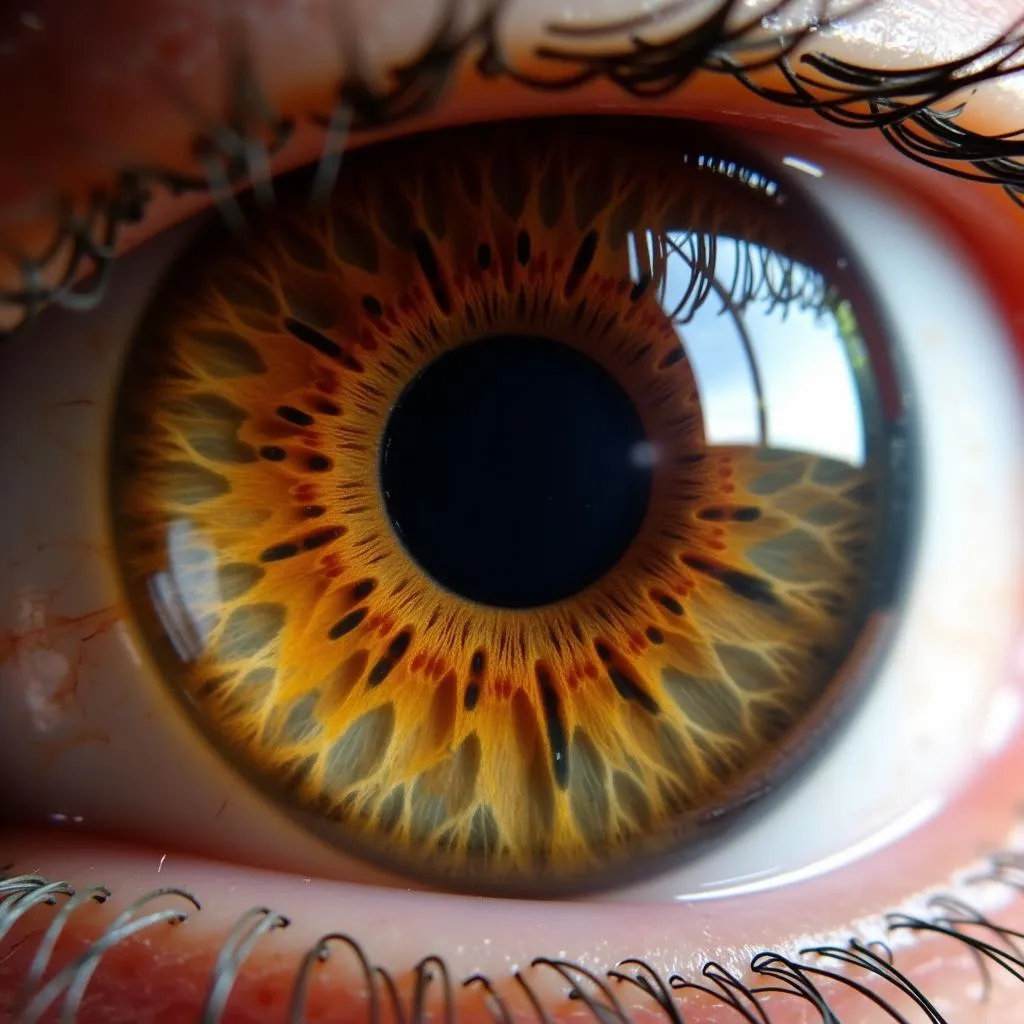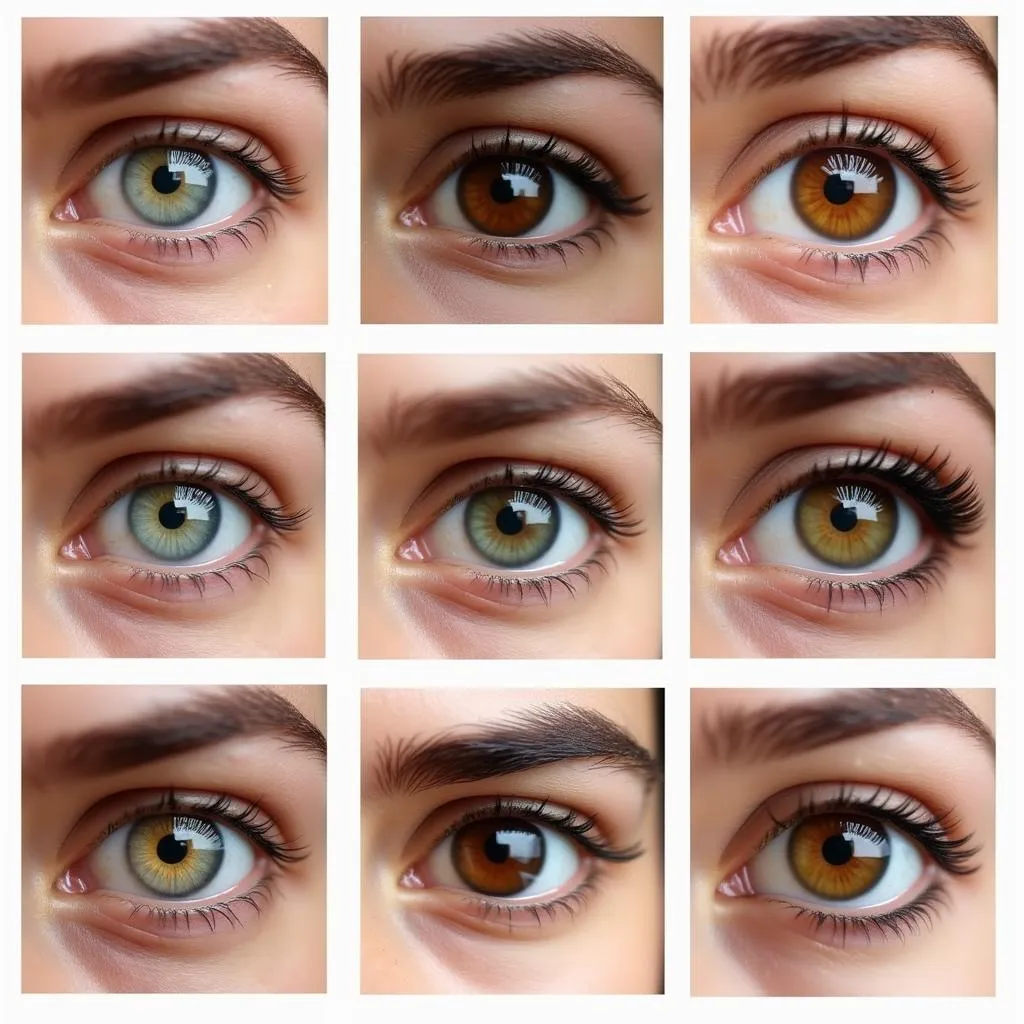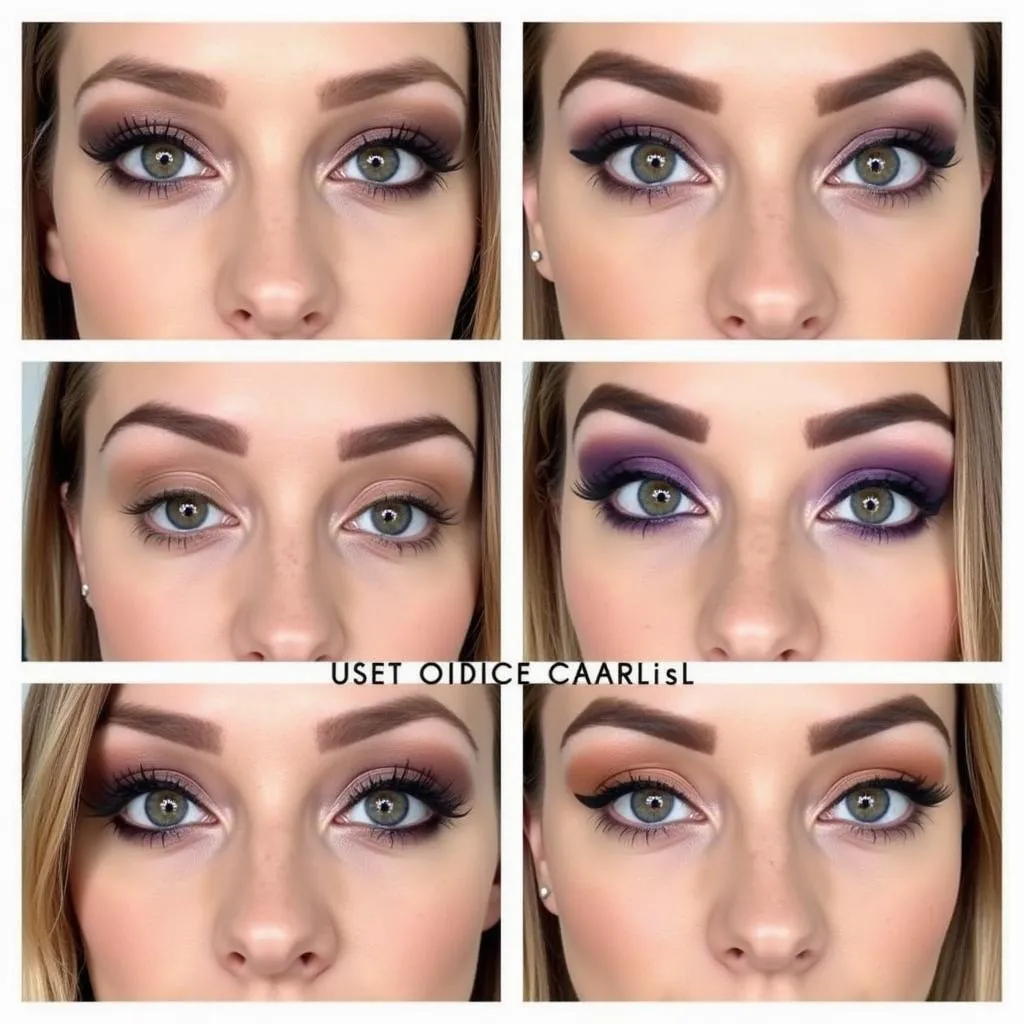Hazel eyes are often described as a captivating blend of colors, shimmering with shades of green, brown, and gold. But what exactly determines this unique eye color, and what makes it so alluring? Let’s delve into the fascinating world of hazel eyes, exploring their origins, variations, and the science behind their mesmerizing appearance.
Deciphering the Hazel Hue: It’s All About Melanin
Like all eye colors, hazel is determined by the amount and distribution of melanin, a pigment found in the iris. However, unlike blue or brown eyes, which have relatively consistent melanin levels, hazel eyes exhibit a unique interplay of pigment concentrations.
- Brown melanin: Hazel eyes contain a moderate amount of brown melanin, primarily concentrated around the pupil.
- Greenish hues: The presence of Rayleigh scattering, a phenomenon that scatters light, contributes to the greenish or amber tones often seen in hazel eyes.
- Individual variation: The precise ratio and distribution of pigments vary significantly among individuals, resulting in a wide spectrum of hazel shades, from light, golden hazel to deep, almost brown hazel.
 Structure of a hazel eye
Structure of a hazel eye
Unveiling the Genetics: A Complex Inheritance Pattern
The inheritance of hazel eyes is more complex than simple Mendelian genetics. While brown eyes are generally considered dominant over blue eyes, hazel eyes don’t fit neatly into this binary. Multiple genes contribute to eye color, and the interaction between these genes determines the final outcome.
- Bey2 gene: This gene plays a crucial role in melanin production. Variations in this gene contribute to the diversity of hazel shades.
- Other contributing genes: Several other genes are believed to influence eye color, adding further complexity to the inheritance pattern.
This intricate genetic interplay explains why hazel eyes can appear unexpectedly in families, even when neither parent has this eye color.
Exploring the Spectrum: A Kaleidoscope of Hazel Shades
Hazel eyes are anything but uniform. They come in a mesmerizing array of shades, each with its own unique charm:
- Light Hazel: Characterized by a predominantly golden or amber hue, often with green flecks surrounding the pupil.
- Hazel-Green: A balanced blend of green and brown, creating a vibrant and striking appearance.
- Hazel-Brown: Leaning towards a deeper brown, with subtle hints of green and gold, lending warmth and depth to the eyes.
 Variations of Hazel Eye Colors
Variations of Hazel Eye Colors
Hazel Eyes and Personality: Fact or Fiction?
Throughout history, hazel eyes have been associated with various personality traits, often characterized as mysterious, alluring, and even mischievous. While there is no scientific evidence to support these claims, the unique and captivating nature of hazel eyes undoubtedly contributes to their perceived mystique.
“Hazel eyes hold a certain allure,” notes renowned color psychologist Dr. Amelia Hayes. “Their dynamic interplay of colors creates an element of surprise and intrigue, making them particularly captivating to observe.”
Embracing the Beauty of Hazel Eyes
Whether light or dark, predominantly green or brown, hazel eyes possess a unique beauty that deserves to be celebrated. Understanding the science behind their color and appreciating their diverse shades allows us to fully embrace the captivating charm of this mesmerizing eye color.
For personalized advice on how to enhance your hazel eyes with makeup and color palettes, consult our team of expert color consultants. We are dedicated to helping you discover the perfect colors to complement your unique features and express your individual style.
 Makeup for Hazel Eyes
Makeup for Hazel Eyes
FAQ
1. Are hazel eyes the same as amber eyes?
While similar, amber eyes have a more uniform golden or copper color, lacking the green and brown flecks often seen in hazel eyes.
2. Can hazel eyes change color?
Hazel eyes can appear to change color depending on lighting, clothing, and even mood, due to the way light interacts with the melanin in the iris.
3. What is the rarest hazel eye color?
Hazel-green eyes, with a balanced blend of both colors, are considered relatively rare and striking.
4. Do hazel eyes occur in all ethnicities?
While more common in people of European descent, hazel eyes can occur in various ethnicities, although less frequently.
5. What is the best way to enhance hazel eyes with makeup?
Earthy tones, such as golds, browns, and greens, can complement hazel eyes, while purples and blues can create a captivating contrast.
Need assistance in finding the perfect colors to accentuate your hazel eyes? Contact us at 0373298888, email us at [email protected], or visit our store at 86 Cầu Giấy, Hanoi. Our dedicated team is available 24/7 to provide expert advice and help you discover the colors that best express your unique style.
